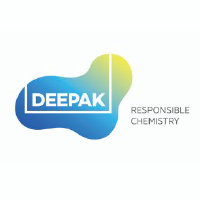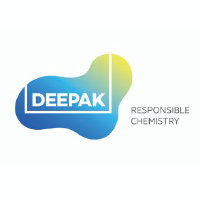
Deepak Nitrite Ltd
NSE:DEEPAKNTR


| US |

|
Johnson & Johnson
NYSE:JNJ
|
Pharmaceuticals
|
| US |

|
Berkshire Hathaway Inc
NYSE:BRK.A
|
Financial Services
|
| US |

|
Bank of America Corp
NYSE:BAC
|
Banking
|
| US |

|
Mastercard Inc
NYSE:MA
|
Technology
|
| US |

|
UnitedHealth Group Inc
NYSE:UNH
|
Health Care
|
| US |

|
Exxon Mobil Corp
NYSE:XOM
|
Energy
|
| US |

|
Pfizer Inc
NYSE:PFE
|
Pharmaceuticals
|
| US |

|
Palantir Technologies Inc
NYSE:PLTR
|
Technology
|
| US |

|
Nike Inc
NYSE:NKE
|
Textiles, Apparel & Luxury Goods
|
| US |

|
Visa Inc
NYSE:V
|
Technology
|
| CN |

|
Alibaba Group Holding Ltd
NYSE:BABA
|
Retail
|
| US |

|
3M Co
NYSE:MMM
|
Industrial Conglomerates
|
| US |

|
JPMorgan Chase & Co
NYSE:JPM
|
Banking
|
| US |

|
Coca-Cola Co
NYSE:KO
|
Beverages
|
| US |

|
Walmart Inc
NYSE:WMT
|
Retail
|
| US |

|
Verizon Communications Inc
NYSE:VZ
|
Telecommunication
|
Utilize notes to systematically review your investment decisions. By reflecting on past outcomes, you can discern effective strategies and identify those that underperformed. This continuous feedback loop enables you to adapt and refine your approach, optimizing for future success.
Each note serves as a learning point, offering insights into your decision-making processes. Over time, you'll accumulate a personalized database of knowledge, enhancing your ability to make informed decisions quickly and effectively.
With a comprehensive record of your investment history at your fingertips, you can compare current opportunities against past experiences. This not only bolsters your confidence but also ensures that each decision is grounded in a well-documented rationale.
Do you really want to delete this note?
This action cannot be undone.

| 52 Week Range |
2 065.2
3 102.6
|
| Price Target |
|
We'll email you a reminder when the closing price reaches INR.
Choose the stock you wish to monitor with a price alert.

|
Johnson & Johnson
NYSE:JNJ
|
US |

|
Berkshire Hathaway Inc
NYSE:BRK.A
|
US |

|
Bank of America Corp
NYSE:BAC
|
US |

|
Mastercard Inc
NYSE:MA
|
US |

|
UnitedHealth Group Inc
NYSE:UNH
|
US |

|
Exxon Mobil Corp
NYSE:XOM
|
US |

|
Pfizer Inc
NYSE:PFE
|
US |

|
Palantir Technologies Inc
NYSE:PLTR
|
US |

|
Nike Inc
NYSE:NKE
|
US |

|
Visa Inc
NYSE:V
|
US |

|
Alibaba Group Holding Ltd
NYSE:BABA
|
CN |

|
3M Co
NYSE:MMM
|
US |

|
JPMorgan Chase & Co
NYSE:JPM
|
US |

|
Coca-Cola Co
NYSE:KO
|
US |

|
Walmart Inc
NYSE:WMT
|
US |

|
Verizon Communications Inc
NYSE:VZ
|
US |
This alert will be permanently deleted.
 Deepak Nitrite Ltd
Deepak Nitrite Ltd
Deepak Nitrite Ltd
Investor Relations
Deepak Nitrite Ltd. is a cornerstone in India's vibrant chemical industry, standing out for its multifaceted approach to manufacturing and supplying a diverse range of chemical products. Established in the 1970s, the company has grown to become a powerhouse by strategically expanding its portfolio across various chemical segments. Its operations span multiple business units, including Basic Chemicals, Fine and Specialty Chemicals, Performance Products, and the rapidly growing Phenol and Acetone segment. The company manufactures key chemicals used in various industries, including textiles, agriculture, petrochemicals, and pharmaceuticals. It plays a critical role in the supply chain, converting basic raw materials into value-added, intermediate products that fuel a wide array of industrial applications.
Deepak Nitrite's financial vitality is deeply connected to its operational strategy of backward and forward integration, which allows it to optimize costs and enhance profitability. The company makes its mark in the global market by leveraging economies of scale, investing in cutting-edge technology, and prioritizing sustainable practices to stay ahead of environmental regulations and customer expectations. Furthermore, its recent ventures into high-margin specialty chemicals and the Phenol and Acetone business have not only diversified its revenue streams but also positioned it as a significant player in these high-demand sectors. Through continual focus on innovation and strategic expansions, Deepak Nitrite secures its position in a highly competitive field, ensuring robust growth and adaptability to changing market dynamics.

Deepak Nitrite Ltd. is a cornerstone in India's vibrant chemical industry, standing out for its multifaceted approach to manufacturing and supplying a diverse range of chemical products. Established in the 1970s, the company has grown to become a powerhouse by strategically expanding its portfolio across various chemical segments. Its operations span multiple business units, including Basic Chemicals, Fine and Specialty Chemicals, Performance Products, and the rapidly growing Phenol and Acetone segment. The company manufactures key chemicals used in various industries, including textiles, agriculture, petrochemicals, and pharmaceuticals. It plays a critical role in the supply chain, converting basic raw materials into value-added, intermediate products that fuel a wide array of industrial applications.
Deepak Nitrite's financial vitality is deeply connected to its operational strategy of backward and forward integration, which allows it to optimize costs and enhance profitability. The company makes its mark in the global market by leveraging economies of scale, investing in cutting-edge technology, and prioritizing sustainable practices to stay ahead of environmental regulations and customer expectations. Furthermore, its recent ventures into high-margin specialty chemicals and the Phenol and Acetone business have not only diversified its revenue streams but also positioned it as a significant player in these high-demand sectors. Through continual focus on innovation and strategic expansions, Deepak Nitrite secures its position in a highly competitive field, ensuring robust growth and adaptability to changing market dynamics.





























 You don't have any saved screeners yet
You don't have any saved screeners yet
